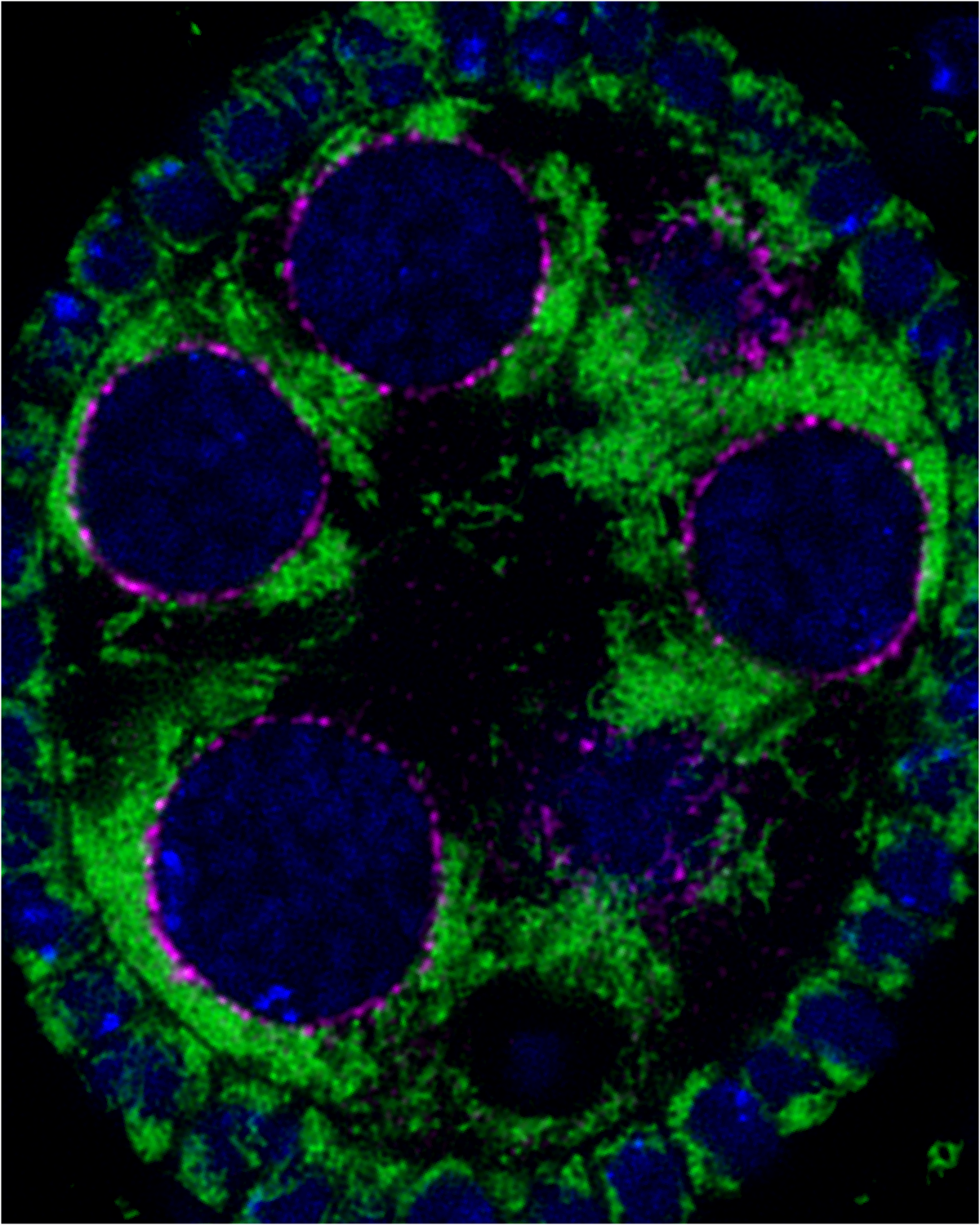
Our DNA is full of genetic 'parasites' that can move across the genome and potentially disrupt important regions. To prevent this uncontrolled movement, eukaryotes have evolved an immune system based on small RNA molecules: the piRNA pathway. As in a race to arms, producing the correct repertoire of piRNAs is key for effective defence. piRNAs are produced from longer RNAs by a dedicated machinery, whose components are found on the mitochondria or in specialised peri-nuclear structures, namely nuage/Yb-bodies. However, it is presently unclear how these two sites communicate to achieve piRNA production. In a new study from Professor Greg Hannon's group at the CRUK Cambridge Institute, Munafò and colleagues show that the RNA helicase Armitage (Armi) delivers piRNA precursors from nuage/Yb-bodies to the mitochondrial surface.
The authors characterise the Drosophila gene CG10880, which encodes a mitochondrial protein required for piRNA production. Intriguingly, mitochondria in CG10880 mutants are misshaped. Given its role in assembling the 'labyrinth' of mitochondria, they named this gene Daedalus, after the mythological Greek craftsman who built the first labyrinth. Daedalus, together with the mitochondrial protein Gasz, promotes piRNA production by recruiting Armi from nuage/Yb-bodies to mitochondria. Armi directly binds piRNA precursors and, once it has reached mitochondria, it closely associates with the endonuclease Zucchini that generates mature piRNAs. These findings place Armi in a critical position, possibly contributing to the distinctive cleavage pattern of precursor molecules.















